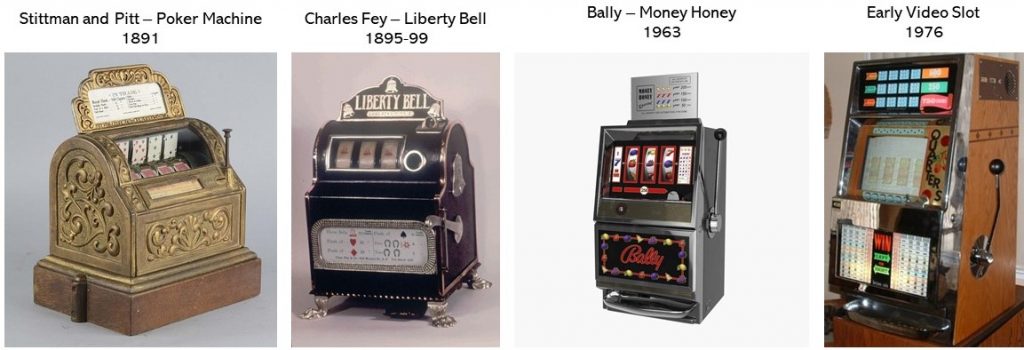Imagine walking into a bustling saloon in the late 19th century. The air is filled with laughter, the clinking of glasses, and the occasional shuffle of decks of cards. In one corner, a curious contraption stands out—a machine with spinning reels and colorful symbols. The clamor of excitement radiates from a group of eager patrons, nervously feeding coins into this enigmatic device, hoping for a lucky break. This was the birth of the slot machine, an invention that would not only revolutionize the gambling world but also capture the imagination of millions.
The story of slot machines is one steeped in innovation and evolution. The first mechanical slots, known as “one-armed bandits,” emerged in the late 1800s, forever changing the landscape of casino gaming. Charles Fey, a mechanic from San Francisco, developed the iconic Liberty Bell machine in 1895, which became the foundation for all future slot machines. With its simple mechanism, players pulled a lever to spin three reels adorned with symbols, such as horseshoes, diamonds, and the famous Liberty Bell. The objective was simple: line up matching symbols to win coins.
Yet, the path from this humble beginning to the modern gaming experience we know today was anything but linear. As the popularity of slot machines surged, they began to appear in bars, restaurants, and even corner stores, leading to the creation of various iterations. Different designs, themes, and features started to emerge, captivating a wider audience. Though these early machines were mechanical in nature, they set the stage for advancements that would eventually lead to electronic slots and, later, online gaming.
In this journey through the history of slot machines, we witness a continuous response to popular culture, technology, and player preference. Each innovation has contributed to an ever-expanding realm of excitement and possibility. The allure of waiting for those reels to stop, holding one’s breath for a chance at victory, remains a cherished experience even today. Understanding the foundational stories, technological advancements, and shifts in player engagement will deepen our appreciation for this iconic gaming experience.
What drove this transformation? How did slot machines adapt to the changing tides of technology and society? In the following sections, we will dive deeper into the transition from the Liberty Bell to the digital slots of the present day. We will explore the features that have evolved and gained popularity, giving you insight into what makes these machines tick—and how they continue to enchant players around the world.
From Liberty Bell to Online Slots
Imagine walking into a dimly lit saloon in the late 19th century. The scent of whiskey mingles with the sound of laughter, clinking glasses, and the occasional piano tune. In the corner, a machine glows enticingly, adorned with colorful symbols of fruits, bells, and diamonds. This isn’t just any contraption; it’s the very first slot machine, known as the Liberty Bell, and it’s about to change the face of gaming forever.
The Liberty Bell, designed by Charles Fey in 1895, was a simple yet captivating device. Players would pull a lever, and three spinning reels would come to a halt, revealing a combination of symbols. If you landed three bells in a row, you would win the jackpot: a whopping 50 cents! Back then, this was considered a small fortune, and the excitement surrounding it was palpable. Little did anyone know, this mechanical marvel was just the start of a long journey in the world of gambling.

The Rise of Mechanical Slots
As the popularity of the Liberty Bell soared, other inventors jumped on the bandwagon. By the early 1900s, slot machines began to appear in saloons and gambling houses across the United States. These machines evolved in design and complexity, with the introduction of second-generation machines by inventors like Herbert Mills, who created the “Operator Bell.” Featuring symbols such as cherries and lemons, these machines not only retained the charm of the original but also offered bigger payouts and new gaming experiences.
- Features of Early Slot Machines:
- Mechanical reels operated by a lever.
- Limited symbol combinations, typically focused on fruits.
- Coins were required for play, along with mechanical payout systems.
As the years rolled on, the introduction of electricity sparked a new era for slot machines. The 1960s saw the advent of electromechanical slots, which allowed for greater creativity in design and features. The iconic “money honey” machine, developed by Bally Technologies, was a game-changer, featuring a bottomless hopper and automatic payouts. Players were now treated to a rich visual and auditory experience, as these machines lit up with vibrant colors and enticing sounds.
The Digital Transition
Fast forward to the late 20th century, and the landscape of gaming began to shift dramatically with the rise of personal computers and the internet. In 1994, the first online casino opened its virtual doors, allowing players to indulge in slots from the comfort of their homes. This evolution was monumental; the slot machine, which once required a physical presence in a bustling venue, could now be played at any time, anywhere.
- Characteristics of Online Slots:
- Variety of themes and styles, from classic fruit machines to intricate adventures.
- Innovative features, including bonus rounds, multipliers, and progressive jackpots.
- Accessibility on various devices, from desktops to smartphones.
The transition from mechanical to digital was not just a leap in technology; it was a redefinition of what a slot machine could be. Today, online slots offer immersive experiences with stunning graphics, animations, and soundtracks that can transport players into the world of their favorite games.
As we stand on the brink of further innovations, it’s clear that the journey from the Liberty Bell to online slots is not just a story of machines, but a tale of evolving entertainment. The excitement that sparked in a dusty saloon continues to thrive in modern digital landscapes, and who knows what the future holds for slot enthusiasts? The only certainty is that the spirit of play will always find a way to captivate the human experience.
Evolution of Features
Imagine walking into a bustling casino in the late 1800s, the sound of clinking coins and the excited chatter of eager players filling the air. At the far end of the room, a simple machine stands out: the Liberty Bell, the first-ever slot machine. Players would pull the lever, watching in anticipation as the reels spun and eventually settled on a combination that could yield them a payout of coins. Little did they know that this simple contraption would set the stage for an explosive evolution in gaming technology.
Fast forward a century, and the world of slot machines has transformed beyond recognition. The basic mechanics of spinning reels may have remained, but the features added to these machines have become increasingly sophisticated, capturing the interest of players worldwide.
The Introduction of Electromechanical Features
The 1960s marked a significant turning point in the evolution of slot machines. Electromechanical components were introduced, transitioning from the mechanical machines of the past. This not only increased the speed of play but also allowed for the incorporation of various new features:
- Multiple Paylines: Players could now bet on multiple lines, increasing their chances of winning.
- Bonus Rounds: Interactive features like free spins and bonus games introduced additional excitement and opportunities for players to win.
- Random Number Generators (RNGs): Ensuring fair play, RNGs made the outcome of every spin unpredictable and more exciting.
The Advent of Video Slots
As technology advanced further, the 1970s ushered in the era of video slots. These machines ditched the physical reels for a digital screen, allowing for unlimited creativity in terms of design and gameplay features. Players were now treated to:
- Themed Games: From movies to TV shows, themes enhanced the gaming experience, creating a narrative that drew players in.
- Advanced Graphics and Sound Effects: Engaging visuals and immersive audio made every spin an experience transcending mere gambling.
- Progressive Jackpots: These jackpots amassed from multiple machines, creating life-changing win opportunities for lucky players.
The Online Revolution
With the rise of the internet in the late 1990s, online casinos opened up a new world for slot machine enthusiasts. Players could now access their favorite games from the comfort of their homes or on-the-go through mobile devices. The features evolved even further:
- Interactive Features: Online slots often include features like pick-and-click bonuses and skill-based games, allowing players to influence outcomes.
- Social Gaming: Many online platforms introduced multiplayer options that allowed friends to play together, adding a social dimension to the gaming experience.
- Instant Play: Games became accessible without downloads, making it easier for players to enjoy slots whenever and wherever they wanted.
The evolution of slot machine features reflects technological advancements and the changing tastes of players. From the simple pull of a lever to interactive digital experiences, each stage in this evolution has paved the way for the next, continuously captivating and entertaining players.
As we look back, it’s fascinating to consider how these innovations have shaped not only the machines themselves but also the entire culture surrounding gambling. With each leap in technology, the humble slot machine continues to captivate new generations of players, and the story is far from over.
